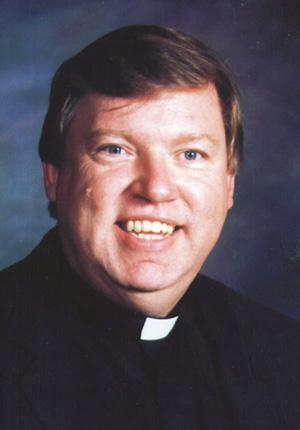
(Editor’s note: Diocesan Planning Commission co-chairs, Father Jim Vrba and Ruth Skeens, answer the following questions raised during recent parish planning meetings held at seven locations throughout the Davenport Diocese. The commission appreciates the many people who submitted questions.)
Q: How about expanding the initial planning in parishes from two months to perhaps three or four months?
A: The planning process will be time consuming. In response to many comments from the area meetings the timeline for Phase One has been extended from Nov. 25, 2010, until Jan. 17, 2011.
Q: Is the old plan available for review? Informing us where to find the planning process document on the website would be helpful before first meeting.
A: The entire report, “Living the Faith” study may be found on our diocesan website: www.davenportdiocese.org/library/LFTF.pdf. The Parish Planning Process booklet can be found by going to the bottom of the diocesan website home page and clicking on: “See Local Area Parish Planning Booklet.”
You can also insert “Parish Planning Process Booklet” into the search engine at the top of the diocesan home page. As Bishop Martin Amos stated at each of the meetings, the current planning process builds upon the “Living the Faith” Task Force report of 2005.
Q: What is really going to happen with the input or planning proposals? My wife was involved with Ottumwa planning five years ago and nothing changed within parishes.
A: While some parishes may not have seen the fruits of the work of the “Living the Faith” study five years ago, other parishes did benefit from the planning. For example, some of the recommendations from the “Living the Faith” study that have been acted upon include the parishes of Oskaloosa and Pella working more closely; St. Mary’s, Iowa City, and the Newman Catholic Student Center sharing a priest; St. Thomas More relocating its church from Iowa City to Coralville; St. Patrick moving to the east side of Iowa City (also encouraged by a tornado); the parishes of Fort Madison completing their consolidation plans, etc.
The parishes of St. Joseph, East Pleasant Plain, and Mother Cabrini, Richland, benefited directly from the diocesan Ministry Formation Program. They decided to consolidate into Ss. Joseph & Cabrini Parish and hire Shirley VanDee as their parish life administrator. A priest is assigned to the parish as the canonical pastor and sacramental minister.
Our diocese has been engaged in planning projects for many years. Most businesses look to strategic planning every five years in order to address change. Diocesan planning projects are advisory to the bishop. They make recommendations that guide the bishop, parishes, priest assignments, and give direction to other ministerial groups and situations.
Q: We need to let those in the parishes know what the planning process is all about and how they can help. What is the best way to do this?
A: On page 4 of the Parish Planning Process booklet, there are “Options for Raising Parishioner Awareness.”
The current parish planning project calls for much more input from parishioners, as well as feedback at various stages of the process. Currently parishes are looking at their strengths and areas where they need to grow. It is an opportunity to give an accurate “grassroots” profile from all parishioners. It is also a call to identify areas where more parishioners can be invited into local ministry.
Q: If we have already clustered with another parish, do we still have to add another parish? What exactly does the diocese want?
A: Your parish is the best judge of other parish possibilities to cluster with. If you feel that clustering with another parish is not feasible, then that is your grassroots conclusion. Parishes are determining which of their neighboring parishes they could more closely collaborate with. It is an opportunity for parishes to help each other out, possibly sharing programs, ministries and staff. Hopefully many neighboring parishes will begin, and continue, to work more closely with each other. As Bishop Amos also noted at each area meeting, there is no hidden diocesan master plan cast in stone concerning parish clustering, consolidating or possible closing. Parishes are being encouraged to spend quality time to help chart the course for their own futures.
Q: Who chooses the two representatives from each parish?
A: The pastor/parish life administrator, in consultation with the pastoral council and any other appropriate parish leadership, will appoint the two representatives. As each parish completes the two reports from phase one, pastors and two parish representatives will form “Area Planning Committees” to review all of the information received by the bishop and the Diocesan Planning Commission. The two parish representatives should know their parish well, have quality time to give to the project, and have some experience in planning. They also need an openness to work for the good of several parishes.








